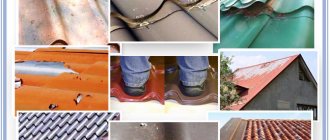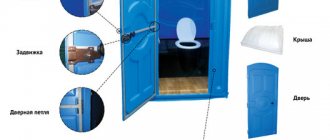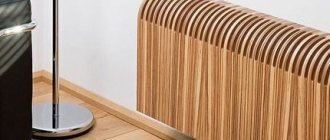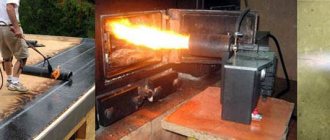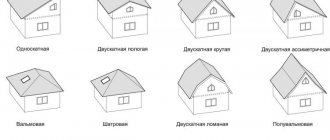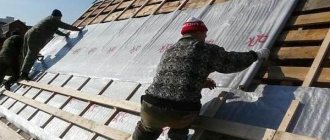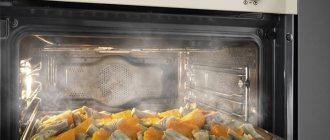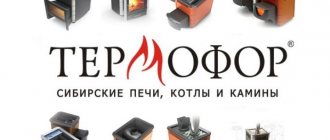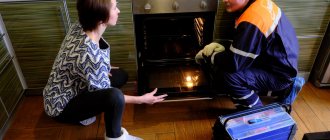When repairing roofing coverings, it is often necessary to use hot air and even fire: to melt bitumen, melt the underside of roofing felt, and even solder the edge of a metal sheet. And for this you already need special tools. But why not just set the same roofing felt on fire with a homemade torch if our goal is to melt the bitumen?
The fact is that you won't succeed this way. How do you direct the fire in the right direction, especially when there is wind? And how long will such torches last, since the work of laying the roof will be serious? These two main functions are performed by a gas burner. And now we’ll tell you how to choose it.
What are gas burners for roofing?
A gas burner is an indispensable thing when repairing a roof. It not only lays sheets of roofing felt, but also heats up the mastic and even seals small seams and holes. Here is a complete list of all operations:
- Cutting and soldering of metal elements.
- Removing the old layer of paint.
- Sealing small cracks.
- Melting mastic.
- Heating sheets before laying.
- Strengthening butt seams.
A typical roofing gas burner consists of a comfortable handle, a tube that supplies gas, and a metal cup at the end. A hose is connected to a special connector on the handle, and the required amount of gas is supplied to it from the cylinder. And you need to regulate the pressure through the valve on the reducer.
In practice, everything is simple: we press the handle lever, the gas enters the hose, and at the outlet of the glass, a combustion of a mixture of gas and air is formed, which we first ignite with a match. The flame temperature is so high that it can reach 1500°C! Using a valve, you can regulate not only the strength of the flame, but also its length.
Conventional gas burners are light enough - within 1-1.5 kg - so that you can easily hold them in your hand and not drop them from fatigue. And the role of the glass is precisely to shape the flow of flame in the desired direction. The design of the glass is precisely shaped in order to maximally protect the flame from being blown out by the wind. Moreover, both the glass and the handle are made differently for different burner models. Although they have the same operating principle: starting a gas burner is no more difficult than a kitchen burner - using an ordinary match or lighter.
Almost all modern gas burners for roofing provide a means of adjusting operating modes: standby mode and operating mode. The standby mode is designed specifically to save fuel.
Different models of modern gas burners differ from each other primarily in the principle of mixing air into the gas. Older burners are connected to an oxygen cylinder, while modern ones can take air from the atmosphere, which is more convenient, of course. Even the gas the burners use can vary. There, most often propane is used, but there are also units that run purely on methane. But we will also note other differences, based on which you can make the right choice.
Standard gas burner in action:
Stages of work when laying material using a roofing torch
If roofing felt is used as a waterproofing material, you cannot do without a gas burner. It is also necessary for covering the roof with modern built-up types of materials.
The entire process of working with the device can be divided into several stages.
- First you need to prepare the base for further laying of the material. For this purpose, it should be cleared of debris. If necessary, the surface must also be leveled using a concrete screed.
- After this, the rolled material is rolled out over the entire surface so that adjacent sheets form an overlap with a width of 85 to 90 mm.
- Having completed the leveling and markings, the rolls must be rolled up again and strengthened at the base of the roof using a torch. Heating the lower part of the roll and the base of the roof using a burner flame, the material is slowly rolled out, pressing it to the base.
To avoid the formation of wrinkles and air bubbles, you need to run a hand roller along the attached canvas. At the final stage of the work, a roofing gas burner is used to heat the seams of the overlapping material. After this, the seams should be rolled again using a hand roller.
When operating gas burners, you need to know several important points:
- The use of this device is possible at temperatures not lower than minus 15 degrees;
- if work is carried out at a lower temperature, then you can use a liquid fuel burner;
- when using a gas burner for laying roofing with high quality characteristics, from 500 to 600 m of roofing material can be laid per day;
- Since the work is carried out outdoors, the gas burner must provide a stable supply of flame and reliably protect it from being blown out by the wind.
Which is better quality: professional or budget?
So, professional contractors purchase usually expensive professional gas burners that are reliable and safe to use. But for a home craftsman, a small, convenient tool without any additional pretensions will be suitable for equipping and repairing the roof of your own home. Will the quality of work be worse? Not at all! It’s just that such a gas burner is not suitable for industrial work, where it is used almost every day and where uninterrupted processes and absolute safety come first.
It is also not acceptable to have a situation where a team goes to a new facility (and, of course, deadlines are definitely running out), and the burner is defective. There is neither time nor reserve to stop everything and go out to purchase new equipment. Whereas, with careful handling in the hands of a home craftsman, even the most Chinese unit will serve faithfully for decades. Especially if you use it no more than once a season.
And in the end, when working with a massive professional burner or with a regular one, you will get the same result. But no matter how expensive and professional the gas burner is, before each use, be sure to check its connecting hose, the tightness of the connections and the clogging of the mouthpiece. Such problems do not occur often, but if you miss a defect, there is a risk of serious consequences.
Although, if you have an idea to buy the cheapest “lighter” (how much does it cost to cover a garage roof?), then we will hasten to dissuade you. The fact is that if a gas burner has a weak gearbox, then the fire will be no more useful than the same blowtorch. The work will proceed extremely slowly - while you heat one part of the sheet, the second will already have time to cool down. As a result, you will simply have to remove the gearbox and work without it at your own peril and risk.
conclusions
Adhesive tape for home and roof repairs: tips + video
This type of equipment such as a gas or liquid fuel burner can significantly increase the productivity of work when laying a built-up roof (detailed article: “Fused roofing: laying technology, choice of material”). But due to the fact that such equipment is a source of increased danger, work with it should be started only after a detailed study of the instructions and safety precautions. You need to work especially carefully if you are using a roofing gas burner that you assembled yourself. Taking the necessary measures is the key to high-quality roofing work without any incidents or shortcomings in the resulting roofing cake.
Which is safer: compact or large?
At first glance, it seems that hauling a gas cylinder onto the roof is the most dangerous undertaking. Moreover, today you can purchase more compact versions of gas burners:
But in fact, it is precisely these cans that can cause burns and even fire. We are talking about counterfeit Chinese products, which are abundant in the construction market. A large cylinder is still located far from the operating burner, while a small cylinder is constantly in the high temperature zone, which is not at all safe. Decide for yourself!
One more point about safety. When choosing a gas burner for your roof, try to avoid counterfeits and overly cheap products - this is simply unsafe. So, the most common problem with such burners is that the operating pressure may be indicated in the technical data sheet as 0.05-0.08 MPa, but in reality it turns out to be up to 1.6 MPa, as in any propane burner. But the supplied gearbox is not at all designed for such parameters, and a closed valve may not withstand the pressure directly on the roof. Such a burner requires a gearbox, but an inexperienced user may simply not know about it.
Introduction
A gas burner for roofing work is the main and only assistant that is able to create the necessary conditions for high-quality installation of the roof. Due to its unique characteristics, the tool is considered irreplaceable, which increases the complexity of choice.
And everything is aggravated by the huge variety of models that are suitable for certain materials and conditions. In order for installation or repair to go smoothly, and the result to meet expectations, it is worth paying attention to the types, their features and differences.
Which is more convenient: long or short?
If you value ease of use, then purchase a lever roofing burner, in which you do not need to constantly tighten and unscrew the valve. But how long should the handle be?
Thus, the length of the burner is not a style, but an important functional point: short ones, which do not exceed half a meter in length, usually make partial repairs, heat up individual areas and melt the necessary areas of the roof. But for larger-scale work, you will need a burner with a length of at least 80 cm.
The construction pricing reform should have been completed 1065 days ago.
Good afternoon In the standards of the GESN-2001 collection No. 12 “Roofs” 12-01-002-08, 09, 10 propane gas consumption is 11.8; 6.9; 3.4 kg accordingly are indicated erroneously. The most commonly used burners have an average propane consumption of 6 kg/hour. Based on this, propane consumption (code 542-0042) should be taken at the specified standards in the following amounts: standard GESN-12-01-002-08 - 41.4 kg, 09 - 27.6 kg, 10 - 14.4 kg. QUESTION: is there official confirmation of these figures?
6 kg/hour - what kind of consumption is this, where did it come from? According to the passport or something? Excuse me, have you ever been on a roof or waved a torch? I was and waved a lot... The operating mode in the summer is this: 30% at idle (while you are preparing the next roll, cutting it, trying it on, moving on) and with connections - all 50%. In winter, however, the consumption increases sharply - 1.5 or 2 times (you have to warm and dry the base and warm the freezing cylinders). Try to negotiate with the Customer for compensation for gas, but in practice, during roofing work, the cost of gas is a small part of the cost of the work, so you shouldn’t push too hard.
The customer, as a rule, agrees, and then the switchgear comes and says: “Who are you to add gas to the state price?” That's how it was for me. And I read about such an expense in Grand Stroy-Info in the “Consultations and Explanations” magazine. It was all written there, however, without reference to an official source. So I’m wondering how the inspectors will react to this?
And there is no official source. Even in the standard database, propane butane costs are left unchanged. So refer to “Consultations and Clarifications” No. 2-2004, pp. 12-13.
Again about propane consumption. In the old edition of TER, to the prices for installing and repairing roofs made of fused materials, we added the additional consumption of propane, which our RCTS recommended for us to use. A table was printed in the newsletter, where the additional propane consumption was given to specific prices. Additional consumption was calculated on the basis of the collection “Standard indicators for material consumption. Additions to the collection 12. Roofing” approved and put into effect by a letter from the State Construction Committee of Russia dated April 12, 2000. No. NZ-1512/10. In the new edition of the TER, propane consumption has been increased in these prices, although it is also less than necessary according to the NPRM collection. But at least this way. But in the prices of TERr 58-7-6 and 58-7-7, propane consumption remained unchanged: 6.9 kg and 3.45 kg per 100 m2, respectively. According to the NPRM it is written that it should be 46.2 kg and 23.19, respectively. Question: can I use the table that I used for the prices of the new edition of the database? Here's what the table looks like in the attached file:
Overview of market offers
Gas-air burners are the safest of their kind. Easy to use, lightweight and creates a flame of sufficiently high power. But the modern market also offers more standard options that work without oxygen. Choose the one you feel most comfortable working with:
GG-2U: comfortable and light
GG-2S: against strong winds
And this is already professional equipment. This burner runs on propane and differs from previous models in that it works great in strong winds. The whole secret is in its structure - two valves and two housings, with which it is easy to precisely regulate the operating mode.
GGS1-1.7: universal option
This model is considered universal in the construction world due to its light weight, size and high level of performance. It is convenient for drying roofs and fusing soft materials. If necessary, it is easy to create an intense flame of up to 400°C, which is especially valuable in repair work. But such a burner can only be used on horizontal sections of the roof.
GGK-1: for precision repairs
This model features a heavier and more durable glass for burning old paint and waterproofing the roof. Perhaps this is the most convenient model for roof repair, especially since gas is supplied to it using a lever.
GGS 1-1.0 burners are well suited for minor work, especially repairing junctions, but can also be used for laying waterproofing. But the GGS-1-0.5 series pleases with economical fuel consumption.
GGS-4-1.0: four bells
And for professional installation of roofing materials, the GGS-4-1.0 model is used, which is equipped with four sockets at once and can heat the entire roll at once - all that remains is to quickly roll it out. Significant savings of time and effort! Moreover, it is easy for even one person to cope with such work, but for the repair of just one or two roofs of private houses there is no point in purchasing such equipment.
GV-3: for repairing metal roofing
This propane torch is specially designed for heating metals and manually soldering them, its glass is only 50 mm in diameter.
GV-111R: for stripping
Another popular gas burner is GV-111R. It is especially convenient for repairing roofs with old paint that needs to be removed, and for melting rolled bitumen materials.
GV-550: for junctions
This model is more suitable than any other for repairing roof junction points. The maximum heating of bitumen using this tool is 300°C.
GV-900: heavy fire
The most convenient sample, which gives a maximum flame length of up to 900 mm. You can work while standing, at full height, which is comfortable for daily tasks.
GV-850: fine adjustment
This propane torch is equipped with a special valve, which makes it possible to precisely regulate the amount of gas and the length of the flame using a lever. But such a burner does not operate on gas alone—technical oxygen is necessarily used here.
GGS2-1.5: parallel sockets
This burner is equipped with two parallel high-output sockets.
And finally, let's talk separately about homemade burners, which today are also often used in roof repairs.
SIEVERT: modern version
Basic rules of use
Working with a gas burner involves contact with an open flame, which means certain rules must be followed:
Before thermal treatment, you need to completely clean the surface of foreign objects and small debris. If possible and necessary, level the place where the new roof will be installed. For this you can use a concrete screed. Otherwise, unevenness may compromise the integrity of the roof, and small debris may cause a fire.
It is contraindicated to use a gas burner in conditions below -15 degrees, unless the tool is designed for this. But it is best to use liquid fuel at low temperatures.
If the tool has a hose, then you need to monitor its condition. Pinches, kinks and deformations can lead to gas leaks.
During roofing work, taking into account the characteristics of the burner, appropriate precautions must be taken. Heat-resistant clothing and shoes with non-slip soles
Before use, the tool requires careful inspection for damage and breaks in connections. Using faulty equipment can cause personal injury and irreparable damage to your roof.
When igniting, do not stand near the nozzle.
Only one gas cylinder and the use of only one burner are allowed at the workplace. Other conditions can put your life at great risk.
The valve on propane models can only be opened halfway.
A video from an experienced roofer, which talks about the preparation, the work process and the tool itself
How to make a gas burner yourself?
Like any other tool, you can also build such a burner with your own hands if you are confident in your future safety. But remember, a gas burner is a complex device, and it is important to follow all the rules.
In order to make a torch, you will need a divider and a metal rod - attach them to a handle made of special heat-resistant wood. Borrow a gas supply hose from the gas welding system. And finally, examine the unit for the slightest gas leaks - this is important!
Or everything can be done simpler for small roofing repairs (the result is a fairly powerful burner, note):
Obviously, it is better to buy a ready-made gas burner with all the certificates than to even entrust its manufacture to a good craftsman you know. Just when purchasing, pay attention to the material used to make the burner - only high quality! After all, any burner heats up to a fairly high temperature, and therefore the material must be ultra-strong. Next, look at the handle - it should be equipped with a holder made of durable wood or heat-resistant plastic. This is important if you don't want to get burned unexpectedly while working.
That's all the subtleties!
Device and design
The basis of the tool is a handle, a gas supply tube and a metal head in the form of a glass. The working gas is supplied through a hose connected directly to the connector in the handle. After pressing the handle handle, the valve will open and the gas mixture will flow into the glass through the tube. The fuel supply can be regulated by a reducer for the roof burner, on which a special valve is located. As a rule, glasses are cylindrical in shape. This makes it possible to use heating modes more flexibly. In particular, modern burners make it possible to provide intensive heating, drying and melting of materials at different temperatures
When choosing a model based on its design, it is important to consider how the instrument will be supplied with oxygen. This can be either pumping from the atmosphere or taking air from a special cylinder
The choice of one concept or another is determined by the operating conditions of the device.
What is the propane consumption per 1 m2 of roofing?
Everything sooner or later falls into disrepair. Time passes, the integrity of the roofs is compromised, stains form on the ceilings, and the plaster crumbles. Your once expensive renovation is suffering, and it doesn’t matter what you have on the ceiling: lime, tensile structure or sheets of plasterboard. Everything deteriorates to a greater or lesser extent, especially the residents of the top floors of high-rise buildings face this fact. To repair the roof, modern waterproofing is now used, instead of the usual roofing felt. They are presented in roll materials that are joined when melted. The TechnoNIKOL company presents several types of glass insulation or hydroisol. They differ in both the base (canvas and fabric) and the method of coating (film or sprinkling). You have the opportunity to choose waterproofing that suits you in terms of technical characteristics and price.
Preparing the base
The correct technology for preparing the roof base for fusing roofing materials has a significant impact on the durability, tightness and wear resistance of the coating. A floor properly prepared for gluing a soft roof must be smooth, dry and dry. To obtain reliable fixation of the material, it is necessary to perform a whole range of measures:
- Cleaning the roof surface from dust, dirt and other contaminants. This can be done by “blowing” the roof using a hair dryer and or by jet-abrasive cleaning.
- Drying the roof base. To ensure that there is no water under the roofing material, it is necessary to thoroughly dry the floors. In dry, sunny weather, evaporation of moisture from the concrete thickness occurs within 2-3 days. You can speed up this process using a hair dryer.
- The seams between the concrete base slabs, as well as all irregularities and potholes, are sealed with moisture-resistant concrete grade M 150.
- The surface of the base is primed with bitumen mastic using a roller to form a sticky film that improves adhesion between the roof being built up and the cover.
Important! Before laying the surfaced materials, it is not allowed to treat the roof base with mechanical brushes, grinding discs and other devices that lead to the formation of grooves on the concrete surface.
Peculiarities
The main function of any roofing is to protect the building from wind and precipitation, which is achieved due to its tightness, reliability during operation and durability. TechnoNIKOL built-up roofing rolls fully comply with these parameters.
The traditional waterproofing material of this kind is the well-known roofing felt. It is a cardboard base with bitumen impregnation applied to it. This material is not durable, its installation on the roof is a rather complicated process, and its bitumen coating cracks over time under the influence of the sun and temperature changes. As the tightness of such a coating decreases, moisture penetrates under it, which destroys the cardboard base of the material. Therefore, when carrying out roofing work, roofing material is currently giving way to other more reliable and progressive materials.
Modern technologies for the manufacture of rolled roofing waterproofing involve the use of fiberglass and synthetic materials with increased strength as a base. Modifying components are now added to bitumen to give the coating additional performance qualities. Modern roofing roll fused material is based on fiberglass or polyester. Increased strength characteristics increase the service life of such material for a period of 15 to 35 years.
This base is coated with a polymer-bitumen coating on both sides. By adding plasticizers to bitumen, the impregnation acquires high strength and increased elasticity.
As a result, the material does not form cracks during heating and cooling and can be used in a wide temperature range without reducing its performance characteristics.
A protective layer consisting of shale or granite chips is applied to the front side of the bitumen-polymer coating. Its function is to protect the surface from the influence of atmospheric factors and ultraviolet radiation.
A layer of protective film is glued to the back of the roll. It is designed to protect the material from sticking during storage and transportation. This protective film should be removed before starting roofing work.
Base surface requirements
From the surface on which the fused roofing is to be installed, it is necessary to remove:
- potholes and sinks;
- concrete flows;
- irregularities with sharp edges;
- cracks;
- protruding fragments of reinforcement;
- oil and cement laitance stains;
- dust.
Sharp corners of structures, ends of reinforcement, concrete overhangs are cut down and cleaned. Oil stains should be burned off. The laitance film is removed by wet or dry jet-abrasive cleaning. Dust is removed using:
- brushes;
- industrial vacuum cleaner;
- blowing off with a compressor;
- rinsing with water.
Large potholes, cracks and sinkholes are sealed using cement-sand mortar M 150. Small cracks and potholes can be filled with heated bitumen mastic.
The weld coating requires a smooth and even base. Checking the evenness is carried out with a two-meter rod. The presence of smoothly increasing irregularities with a height of no more than 5 mm along the slope and 10 mm across is acceptable. The number of such irregularities should not exceed two per 4 m2 of the total base area.
When arranging a screed under a built-up coating, it is necessary to provide temperature-shrinkable joints 5 mm wide, which should not be located above the joints of load-bearing concrete slabs and the joints of monolithic thermal insulation.
Announcements on NN.RU - Construction
Smarty owlets chest of drawers ?dimensions: w720*d466*h750 ?material: made of white chipboard + photo printing ?ball guides - full. Price: 3,690 rub.
I am selling a pipe 630x9 p/w of excellent quality. Available in warehouse in Bogorodsk, Nizhny Novgorod region. Price 40000-42000 including VAT.
Double door wardrobe Smarty Owls ?Dimensions: w700*d450*h2030 ?Material: made of white laminated chipboard + photo printing ?Filling: rod. Price: 5,490 rub.
Solid white silicate brick - for rough masonry. 691 pcs per pallet. Delivery by manipulator throughout the Nizhny Novgorod region. Price: 8 rub.
